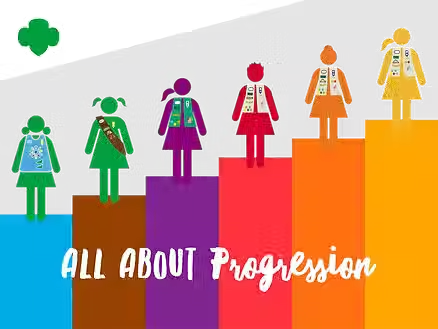Creating an Inclusive Girl Scout Troop: A Troop Leader’s Perspective
- Christina Ettestad
- Mar 19
- 3 min read

As both a troop leader and a mom of a child with disabilities, I know firsthand how important it is to create an environment where every child feels welcomed, supported, and included. My own journey has taught me that sometimes, despite our best intentions, we’re unsure how to support a Girl Scout with different abilities. That’s okay! What matters is a willingness to learn, adapt, and ensure that all members of our troop feel valued.
In the United States, about one in six children aged 3 through 17 years have one or more developmental disabilities. Many of these disabilities, including ADHD, autism spectrum disorders, epilepsy, and severe food allergies, are considered invisible—meaning they may not be immediately apparent, but they still significantly impact a child’s experience. This is why it’s so important to approach every Girl Scout with inclusivity in mind.
From my experience, here are some key ways we can ensure that Girl Scouts of all abilities feel like they belong in our troops.
1. No Experience is Required
You don’t have to be an expert in disabilities to be an inclusive troop leader—you just need to be open-minded and willing to learn. I’ve learned so much simply by listening to families and doing my own research. It’s important not to rely solely on the child or their parents to educate us, as constantly explaining their disability can be exhausting. Instead, seek out resources and connect with other leaders who have experience in inclusive programming.
2. Plan Ahead
Being prepared is one of the most helpful things you can do. I’ve found that anticipating potential challenges and planning for accommodations in advance makes a huge difference. Consider:
What will the activity involve? Who will lead it?
What are the badge requirements, and how can they be adapted?
Are there physical barriers, such as stairs or unpaved paths?
Will the environment be noisy or crowded, and is there a quiet space available?
Small adjustments, like providing noise-canceling headphones or scheduling breaks, can make troop meetings much more enjoyable for everyone.
3. Partner with Parents/Caregivers and Their Girl Scout
As a mom, I appreciate when people ask me what will help my child succeed instead of making assumptions. Engaging with families is key. I encourage parents to fill out the Meet My Girl Scout Form to share their child’s strengths, challenges, and preferences. The Health History Form is also helpful in understanding specific needs.
By working together, we can prepare families for upcoming activities and find ways to make every Girl Scout feel included. Even small accommodations—like offering a visual schedule for a child who struggles with transitions—can have a huge impact.
4. Focus on Abilities, Not Disabilities
One of the most important things I’ve learned is to focus on what a child can do, rather than what they can’t. For example, a Girl Scout who uses a wheelchair may not be able to gather firewood, but she can still be an active part of a campfire experience by helping prepare s’mores or telling stories.
If an activity presents a barrier, I adjust on the fly—without making a big deal about it. By focusing on the intent of an activity rather than rigidly following every step, we open up endless opportunities for all Girl Scouts.
5. Speak Up
As a leader, I try to use teachable moments to foster understanding among troop members. Kids are naturally curious, and it’s okay to answer their questions about disabilities in a respectful way. I also make sure to use people-first language—saying “a child with autism” instead of “an autistic child” or “a child who uses a wheelchair” instead of “wheelchair-bound.”
I also encourage other leaders to take the Delivering Inclusive Programming module on gsLearn, which offers great insights on fostering inclusivity.
6. Create a Welcoming Space
Many families of children with disabilities are used to being excluded, so we have to be intentional about making them feel welcome. Contacting local schools, especially special education teachers, and sharing flyers that explicitly state Girl Scouts welcomes children of all abilities can make a big difference.
Final Thoughts
Inclusion isn’t about making special exceptions—it’s about ensuring that every Girl Scout has the opportunity to participate, lead, and grow. As a troop leader and a mom, I’ve seen how powerful it is when a child is given the chance to shine in their own way.
By embracing accessibility and inclusivity, we create a space where every Girl Scout—regardless of ability—can discover her full potential and build lifelong confidence.
.png)


Comments